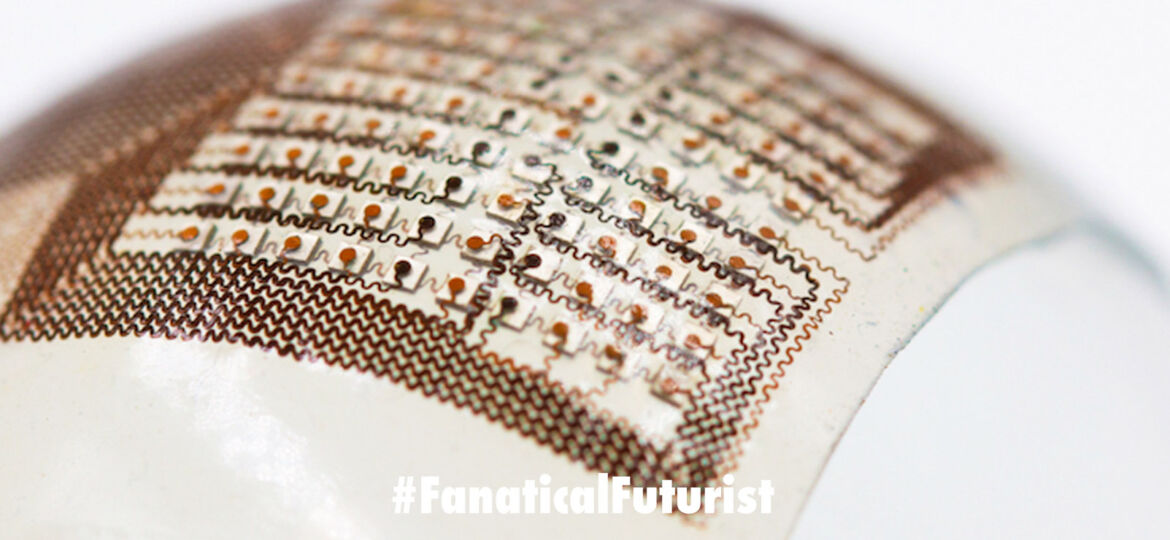
WHY THIS MATTERS IN BRIEF
Having access to ultrasound is like having a window into your body, and now it’s on a patch.
Earlier this year we heard how scientists from the University of California San Diego in the US had developed a flexible ultrasound patch that allows users to see the inner structure of irregular-shaped objects. Well, now they’ve made one that measures a patient’s blood pressure from deep within the body, and as we all begin getting used to tech being on us, in the form of wearables, and not just near us, in the form of smartphones, the innovation could help us monitor our health in new ways and diagnose certain health conditions, such as heart attacks or lung disease, before they become problems.
When you get your blood pressure taken with an arm cuff what’s being measured is known as peripheral blood pressure. This is different to central blood pressure which is the pressure within the central blood vessels that deliver blood straight from the heart to other major organs. Not only is central blood pressure more accurate than peripheral, but it’s also said to be a better indicator of impending heart disease, a condition that, elsewhere, AI is also getting better at diagnosing.

Unfortunately though the standard method of measuring central blood pressure today involves inserting a catheter into a blood vessel in the neck, groin or arm and then guiding it to the patients heart. There’s also a non-invasive method in which a tonometer probe is held against the skin above a major blood vessel, although readings can be affected by the steadiness and angle at which the device is held, along with the amount of pressure that the user applies to the patient’s skin. And additionally, patients must remain very still throughout the procedure.
That’s where the new ultrasound patch comes in. It consists of a thin silicone elastomer sheet that’s patterned with “islands” of electrodes and piezoelectric transducers, linked together by springy copper wire “bridges,” a setup allows it to stretch, bend and twist without damage to the electronics, and is known as an island-bridge structure.
Adhered to the skin and, at the moment, hard wired to a power source and data processing unit, the patch produces ultrasound waves that continuously monitor the diameter of pulsing major blood vessels located up to 4 cm (1.6 inches) beneath the skin. Then the data processor translates that data into a real time central blood pressure reading.
To test the device, a volunteer wore one on his foot, neck, wrist and forearm, both while sitting still and performing exercise. In all cases, it obtained readings that were more accurate than those gathered with a tonometer, and similar to those from a blood vessel-inserted catheter.
“Wearable devices have so far been limited to sensing signals either on the surface of the skin or right beneath it. But this is like seeing just the tip of the iceberg,” says Prof. Sheng Xu, corresponding author of the study. “By integrating ultrasound technology into wearables, we can start to capture a whole lot of other signals, biological events and activities going on way below the surface in a non-invasive manner.”
The researchers now plan on integrating a power source, processor and wireless communications system into the patch, so it can measure blood pressure and transmit its readings as a standalone device. Ultimately, it may someday be used to continuously monitor patients with heart or lung disease, or who are undergoing surgery, as well as many other types of conditions including, perhaps, pregnancy, which is where another ultrasound breakthrough, this time ultrasound on a smartphone, is also helping revolutionise how and where we use ultrasound systems in our daily lives.
A paper on the research was recently published in the journal Nature Biomedical Engineering.
















